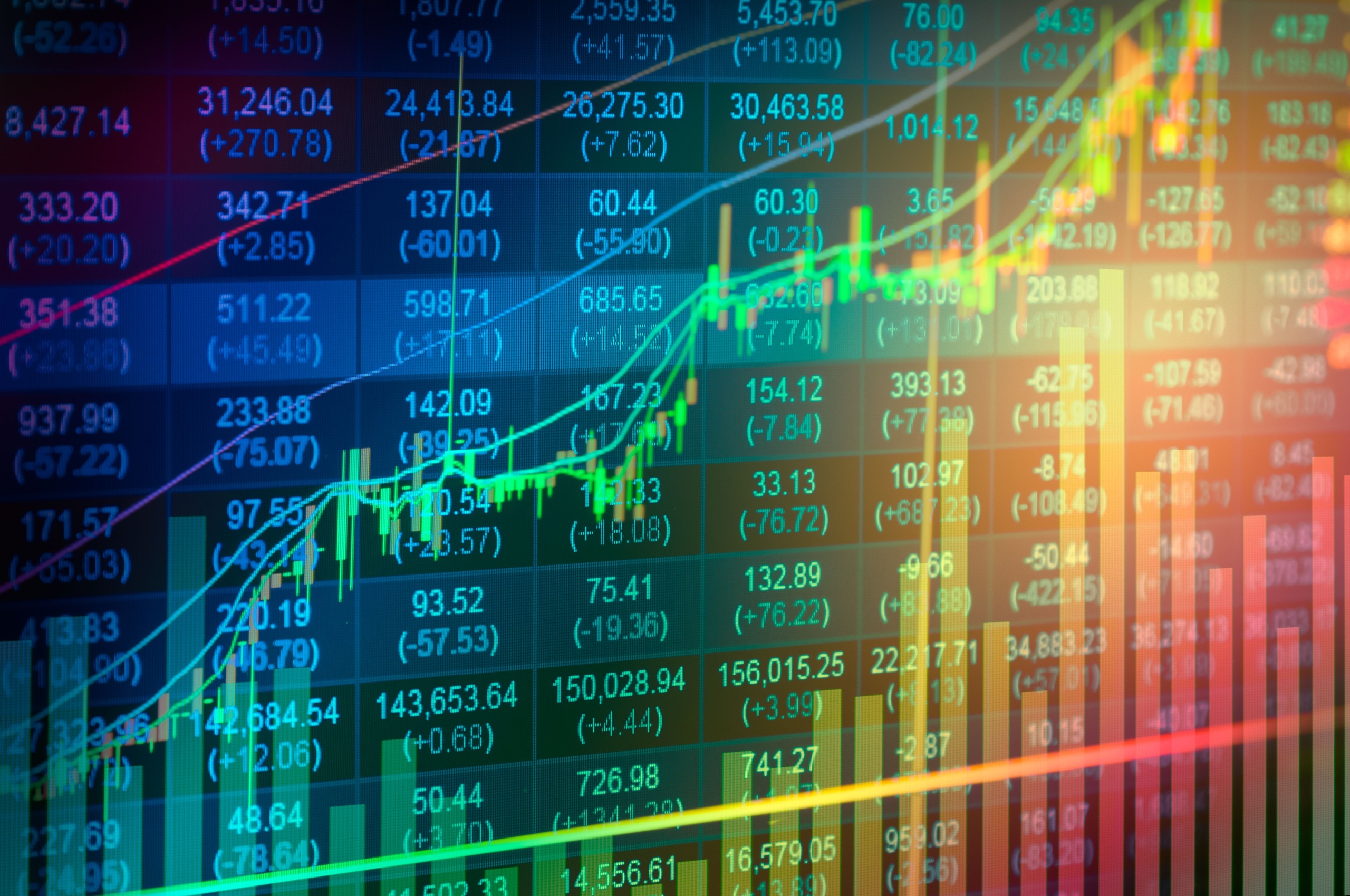
In January, European shares outperformed other regions, and US leadership in artificial intelligence (AI) was challenged by China’s DeepSeek.
Please note any past performance mentioned is not a guide to future performance and may not be repeated. The sectors, securities, regions, and countries shown are for illustrative purposes only and are not to be considered a recommendation to buy or sell.
US
US shares gained in January but lagged other regions as Chinese start-up DeepSeek challenged US leadership in AI. The information technology sector fell but other sectors advanced, with communication services, healthcare, and financials among the top gainers.
Shares of AI-related companies such as NVIDIA experienced some sharp falls as investors digested claims that DeepSeek had trained its generative AI capability to produce results comparable to the market leaders but at a fraction of the cost. This potentially called into question the need for elevated investment in advanced AI chips and data centre capacity. Meanwhile, the Q4 earnings season got under way with mixed fortunes for some of the US mega caps.
The Federal Reserve (Fed) kept interest rates on hold and signalled that there may be no further cuts forthcoming. Non-farm payrolls data indicated a robust US jobs market, with 256,000 jobs added to the economy in December, above expectations. Data from the Bureau of Labor Statistics showed core inflation (which excludes food and energy costs) easing to 3.2% from 3.3% in November.
President Trump took office mid-month for his second stint as president. US investor sentiment has been buoyed by his “America First” policy programme but news of tariff threats rattled markets at the end of the month.
Eurozone
Eurozone shares began 2025 on a strong footing with gains in January outpacing other regions. The eurozone benefited from a rotation out of US tech stocks in January, while worries over trade tariffs eased. Top performing sectors included healthcare and financials, with banks delivering robust returns in the month.
In the information technology sector, shares of semiconductor equipment makers experienced volatility in the wake of the DeepSeek news but still advanced for the month overall. Software stocks performed strongly.
Data from Eurostat indicated that the eurozone economy stagnated in Q4 2024. That meant annual GDP growth for the region is estimated at 0.7% for 2024. The European Central Bank (ECB) cut interest rates as expected by a quarter of a percentage point. ECB president Christine Lagarde warned that economic risks are tilted to the downside given rising trade frictions and weak consumer confidence.
The HCOB flash purchasing managers’ index showed business activity in the eurozone return to growth. The composite PMI rose to 50.2 in January compared to 49.6 in December as the contraction in manufacturing activity eased. PMI data is based on surveys of companies in the manufacturing and service sectors. A reading above 50 indicates growth while below 50 indicates contraction.
UK
UK equities rose over January, led by larger companies while small and mid-sized (smid) companies were very volatile. The large cap energy, industrial, and financial sectors were the top contributors as UK equities were seen to benefit, in line with European equities more broadly, from global investors rotating away from large cap US technology stocks.
Concerns over the UK’s fiscal health became more pronounced over the period, reflecting a sharp increase in gilt yields at the same time as a weakening currency. The aversion to UK assets weighed heavily on the more domestically focussed UK smid companies, many of which fell sharply during the first half of January as a result.
Concerns that a depreciating currency would in turn hinder the Bank of England’s (BoE) ability to ease monetary policy compounded matters. UK smids, however, recovered in line with gilts (yields fell) as bond investors were reassured, in part by the chancellor’s response to events.
Insisting global factors were driving financial turbulence, Rachel Reeves pledged to adhere to the Government’s fiscal rules, calling them “non-negotiable”. News from the Office for National (ONS) Statistics that inflation had slowed unexpectedly in December also helped sentiment somewhat.
That said, the outlook for the domestic economy remained difficult with business confidence weakening. Meanwhile, the ONS reported that retail sales had been weaker than expected for December during the all-important festive period for consumer-facing sectors which had been complaining of higher costs related to rising taxes and wages.
Japan
The Japanese equity market showed weakness in the first half of the month but recovered in the second half, finishing January with a slightly positive return of +0.1% for the TOPIX Total Return in yen terms. The Nikkei 225 declined by 0.2%, experiencing higher volatility due to sharp movements in large-cap technology stocks and weak performance in large-cap exporters.
Market sentiment was heavily influenced by developments in the US, particularly concerns over persistently high inflation and uncertainties surrounding the Trump administration, especially regarding tariffs. In the first half of the month, fears of new tariffs led to a sell-off in exporter stocks, including those in the automobile, technology, and basic materials sectors. This decline mirrored weakness in the US stock market. However, the market rebounded after reports indicated that the US would not impose immediate tariffs on China. Additionally, the announcement of a large-scale AI investment initiative, “Stargate,” backed by a group of companies including SoftBank Group, contributed to the market’s recovery.
The technology sector outperformed following the AI investment news, though some gains were reversed after reports about DeepSeek, a low-cost Chinese Generative AI model, raised concerns over a potential slowdown in US AI investments.
Domestically, the Bank of Japan (BoJ) raised its policy rate in late January, a widely expected move that supported financial stocks, particularly banks. The Japanese yen appreciated modestly against the US dollar due to a narrowing interest rate gap, but with relatively low volatility.
Meanwhile, Japanese companies began releasing their December quarter earnings. Although the number of companies reporting was still limited, initial results suggested slightly better outcomes compared to previous quarters. Additionally, ongoing improvements in corporate governance, such as share buybacks and dividend hikes, provided further support to the market.
Emerging markets
Emerging markets (EM), as measured by the MSCI EM index, rose in US dollar terms in January, underperforming the MSCI World index. While a softer US dollar was helpful, ongoing tariff risks as US President Donald Trump took office weighed on markets. Chinese AI start-up DeepSeek released an open source lower-cost AI model, comparable to OpenAI’s Large Language Model in terms of performance. As the market digested the implications of this news market volatility rose, particularly among technology shares.
Colombia was the top-performing index market, with double-digits returns in US dollar terms, followed by Poland and Brazil. The Brazilian real appreciated against the dollar in the month and with inflation still above the central bank’s target at the end of 2024, interest rates were raised by 100 basis points(bps) at the bank’s January meeting.
Korea posted robust returns, rebounding from poor performance in December 2024. The Middle Eastern markets of Kuwait, UAE, and Saudi Arabia delivered positive returns amid a rising oil price. South Africa outperformed, benefiting from a weaker US dollar and another interest rate cut. Mexico and Taiwan were also ahead of the index while China underperformed given ongoing uncertainty about Trump’s proposed tariffs on US imports of Chinese goods.
India declined, predominantly related to growth concerns. The smaller markets of Malaysia and Philippines posted the biggest losses in the month.
Asia (ex-Japan)
Asia ex-Japan equities, as measured by the MSCI AC Asia ex-Japan index, rose modestly in January amid gains for Korea, Singapore, and Taiwan. The advance was capped by declines in India and Hong Kong, as well as in the smaller Philippines and Malaysia markets.
There was some volatility in the month related to the information technology sector and news that China’s DeepSeek had created a generative AI model that is comparable to the market leaders but at a much lower cost. However, the information technology sector posted gains overall for the month.
Chinese shares gained for the month, with an advance marginally ahead of the index. There were some worries over trade tariffs as President Trump took office in the US. However, the proposed tariffs are at a lower level than the 60% mooted on the campaign trail. Indian shares were under pressure amid worries over the uncertain outlook for economic growth and some sluggish corporate earnings.
Global bonds
January was a month of contrasting trends for the global government bond market. A weak start for the month was followed by a strong rebound, largely due to positive news on inflation. Government bond yields rose in Europe with German Bunds climbing to 2.46%. Elsewhere yields were lower with the US 10-year Treasury sliding to 4.55% (prices move inversely to yields).
One of the key market themes in January was President Trump’s inauguration and the potential implications for policy, particularly regarding anticipated changes to tariffs and their effects on both the US and global markets. In terms of macro news, while December’s US labour market report was strong, the bond market was placated by further signs of disinflation.
In the US, despite heavy supply, credit spreads in the investment grade corporate space remained fairly unchanged, hovering close to the tightest levels in several decades. In contrast, European and UK corporate bonds outperformed with spreads tightening further. (Credit spreads are the difference in yield between a corporate bond and a risk-free government bond, reflecting the additional risk investors take on when lending to corporations compared to the government.)
The high yield markets were also on the positive, particularly in the US, where robust investor demand was driven by signs of a healthy economy, strong corporate earnings, and attractive yields. (Investment grade bonds are the highest quality bonds as determined by a credit rating agency. High yield bonds are more speculative, with a credit rating below investment grade.)
In the eurozone, a benign growth picture accompanied slightly higher headline inflation, with January’s print climbing to 2.5% year-on-year (previously 2.4%), although services inflation was softer.
The UK faced its own challenges as concerns over fiscal health became more pronounced. Signs of slower economic growth heightened worries about public finances, resulting in a sharp rise in gilt yields (yields move inversely to prices). However, as the market shifted its focus back on inflation, with a downside surprise in December’s core CPI (consumer price index) print (3.2% year-on-year versus 3.4% expected) yields fell back at the month end (2-year to 4.22% and 10-year to 4.54%).
Several central bank announcements also came through in January. The BoJ raised interest rates by 25bps to 0.5%, while upgrading its inflation forecasts. The committee also noted uncertainties about the economic outlook. Meanwhile, the ECB cut its main refinancing rate for a fourth consecutive time by 25 basis points to 2.90%. In the US, the Fed kept the fed funds rate unchanged following 100bps worth of rate cuts made in the prior three meetings.
The convertible bond market started the year on a positive note, exhibiting good upside participation. The FTSE Global Focus Convertible Bond Index recorded a gain of 2.2%, compared to the MSCI World Index, which returned 3.5%. The new issuance of convertible bonds remains notably active. In Q4 2024, the market welcomed $26.72 billion of new paper.
Commodities
The S&P GSCI Index gained in January. All subcomponents advanced in the month with precious metals and agriculture posting the strongest gains. Prices of precious metals rose amid concerns over the impact of Trump’s tariff threats.
The agriculture component gained with a strong advance for coffee. The energy component was supported by cold winter weather in much of the northern hemisphere. Among industrial metals, aluminium and copper rose while zinc posted a sharp decline.
Please note
The value of your investments (and any income from them) can go down as well as up and you may not get back the full amount you invested. Past performance is not a reliable indicator of future performance. Investments should be considered over the longer term and should fit in with your overall attitude to risk and financial circumstances.
This blog is for general information only and does not constitute advice. The information is aimed at retail clients only.







 Production
Production
